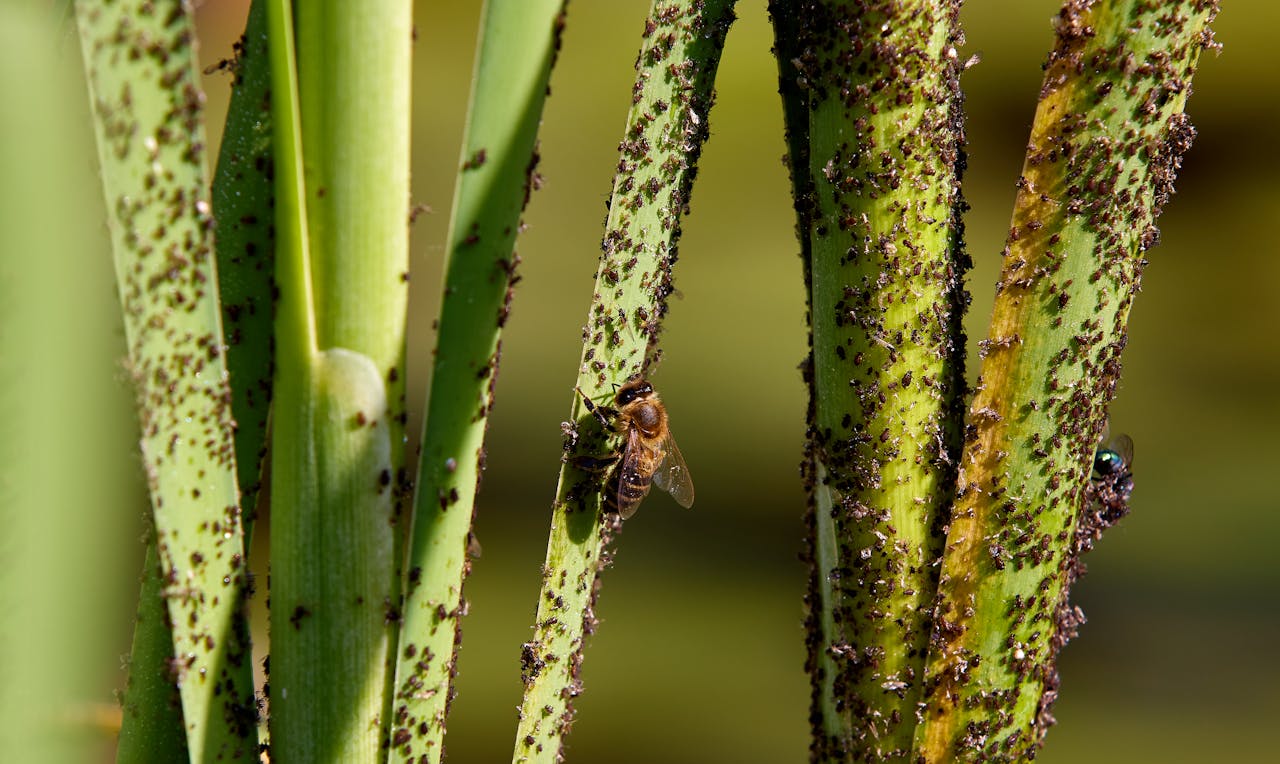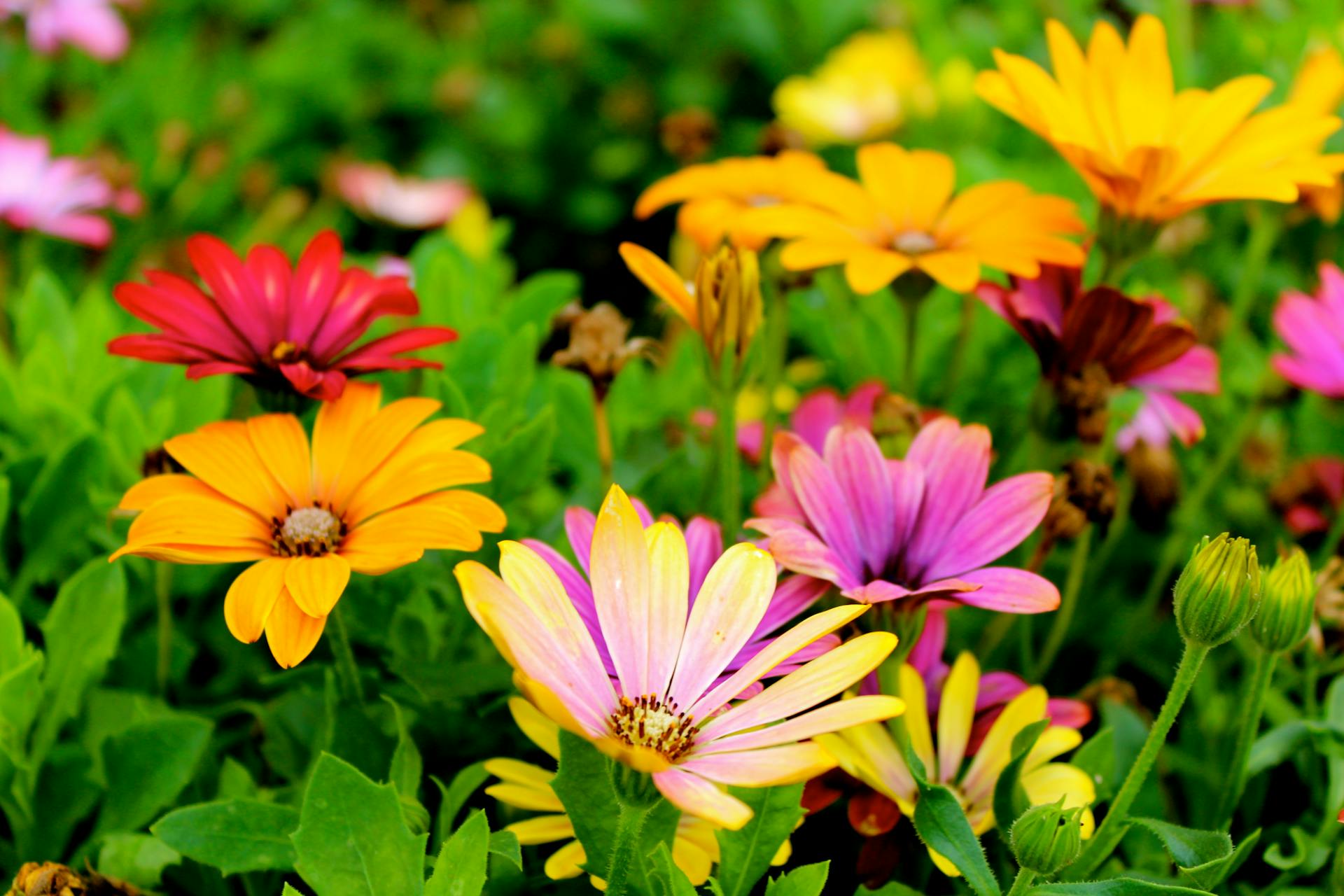Pest Control

How to Get Rid Of Aphids: 5 Effective Solutions
March 31, 2024 3 min read
Aphids might be tiny, but they can cause major problems for those who love their gardens and plants. These insects have a relentless hunger for plant sap, weakening and even destroying a wide range of plants. This results in leaves curling, yellowing, stunted growth, and the production of a sticky substance known as honeydew, which attracts additional pests. If you're wondering how to get rid of aphids, spotting these symptoms early on can be crucial in managing aphid outbreaks.
Spotting Aphid Infestations
Before we discuss how to prevent aphids, it's essential to know their hideouts. They love the undersides of leaves and new shoots, where they can feed undisturbed. Aphids vary in color—green, black, brown, and sometimes pink—helping to identify the specific variety attacking your plants. They’re notorious for targeting a vast range of houseplants and veggies, making regular visual inspection a critical aspect of plant care.
DIY Aphid Control Methods
If you’re a garden enthusiast looking to tackle the challenge of aphid infestations head-on, here are some DIY solutions on how to get rid of aphids with ease:
- Physical Removal: Employing manual removal or a high-pressure water spray is a straightforward yet effective approach for minor aphid infestations. This method is particularly environmentally friendly as it avoids chemical use, ensuring safety for both plants and beneficial insects.
- Insecticidal Concentrates: Utilizing natural repellents like Diatomaceous Earth can form a protective barrier around your garden, repelling aphids. These substances require consistent application for ongoing defense against new infestations. They work by dehydrating aphids on contact, offering an eco-friendly solution that's effective against aphids and other garden pests.
- Horticultural Oils: If you want to learn how to get rid of aphids, proper application of horticultural oils, particularly in warmer conditions, can effectively suffocate aphids without damaging plants. These oils envelop aphids, obstructing their air passages and leading to their demise. This method is especially useful in the early stages of an infestation and provides an efficient solution to pest control without endangering non-target species.
- Insect Growth Regulators (IGRs): IGRs disrupt aphids' developmental processes, preventing them from growing and reproducing. Timing is critical for these products to be both safe and effective. IGRs target the aphids' hormonal systems, causing minimal impact on non-target species and making them an integral part of integrated pest management (IPM) strategies.
- Beneficial Insects: Introducing natural predators such as ladybugs and lacewings into your garden can significantly reduce aphid numbers by establishing a balanced ecosystem. This biological control method is natural and effective and enhances garden health by promoting biodiversity, aiding in pollination, and reducing reliance on chemical pest control methods.
Preventing Aphid Attacks

Apart from learning how to get rid of aphids, you should also implement preventative measures. To make your garden less inviting to aphids, consider these strategies:
- Aphid-Resistant Plants: Adding plants to your garden that naturally resist aphids and attract beneficial insects can significantly reduce your pest problems and enhance your garden’s natural defenses. Marigolds, garlic, chives, and onions are known for their aphid-repellent properties.
- Companion Planting: This involves planting certain species alongside your main crops to either repel aphids or draw them away, acting as a natural form of pest control. Nasturtiums can be used as a sacrificial plant, drawing aphids away from more susceptible varieties. Herbs with potent aromas, like basil and lavender, can deter aphids with their strong scents, creating a protective barrier around your garden.
- Regular Checks: Understanding how to get rid of aphids also requires regular inspections. By systematically examining your plants, especially the undersides of leaves, stems, and new growth, you can identify aphids or the evidence they leave behind. Early identification halts the spread of aphids to other plants and opens the door for simpler, less invasive remediation strategies.
Learn More About Pests
While eliminating aphids might seem challenging, a comprehensive strategy on how to prevent aphids that combines removal, treatment, and prevention is your best bet for success. Different strategies can create a robust garden ecosystem that’s less susceptible to aphid invasion. Want to learn more about how to get rid of aphids or other insects? Explore our pest guides at DIY Pest Warehouse.
